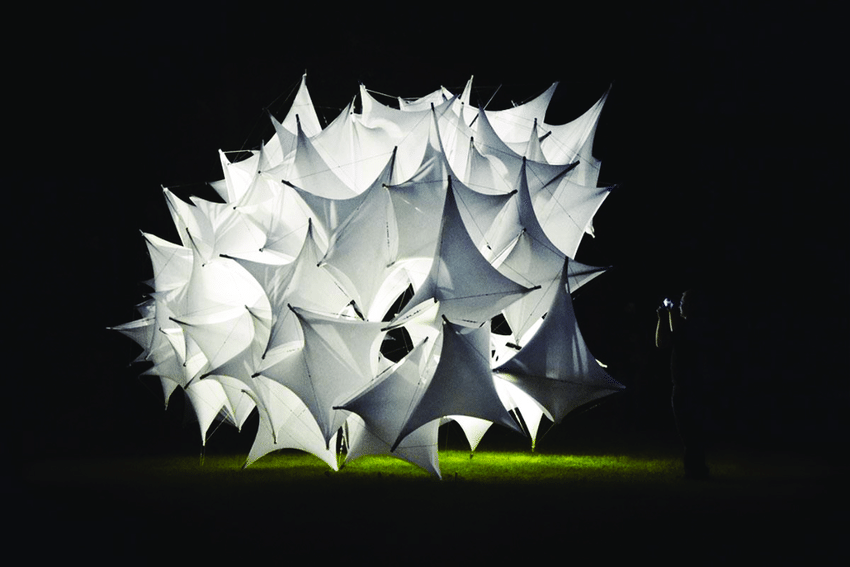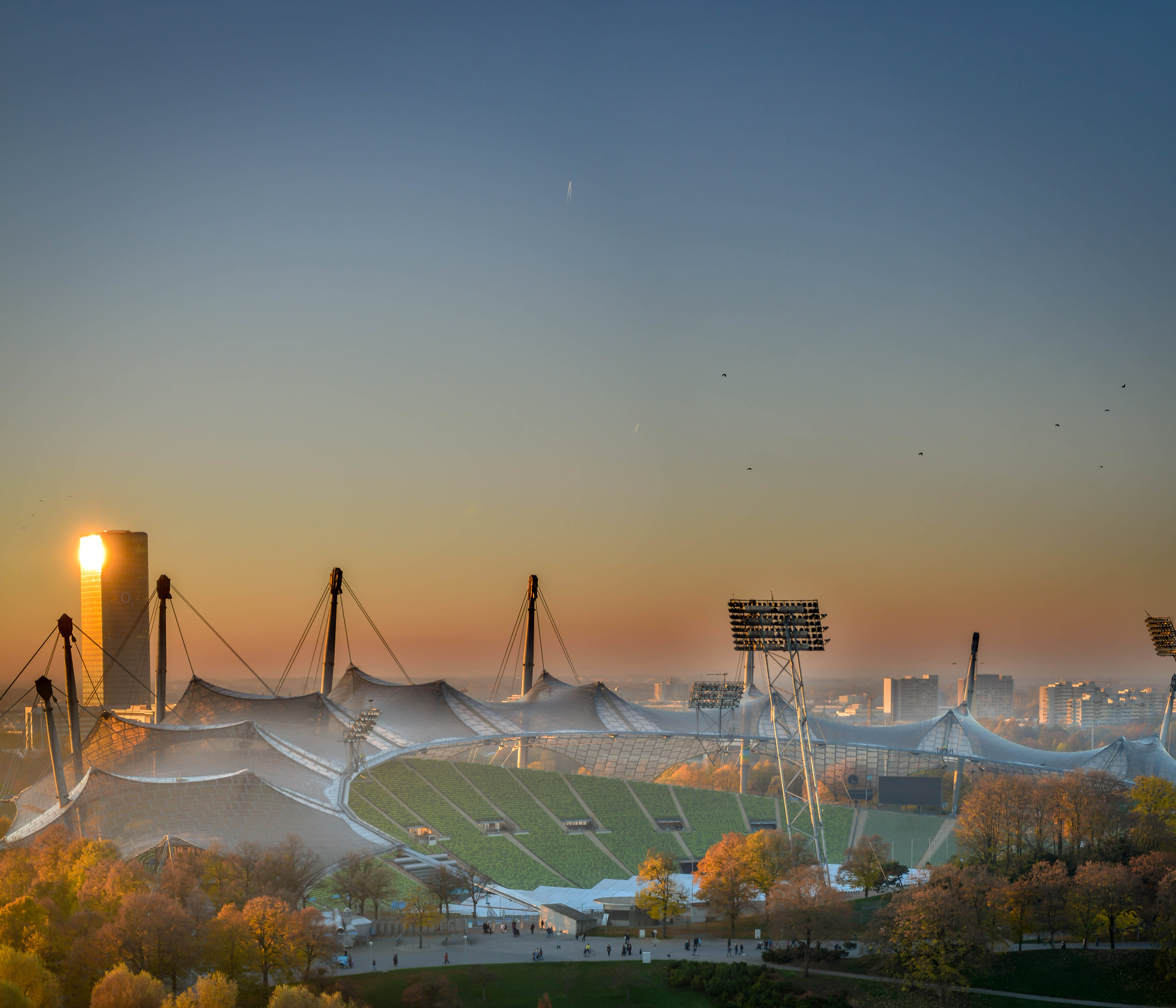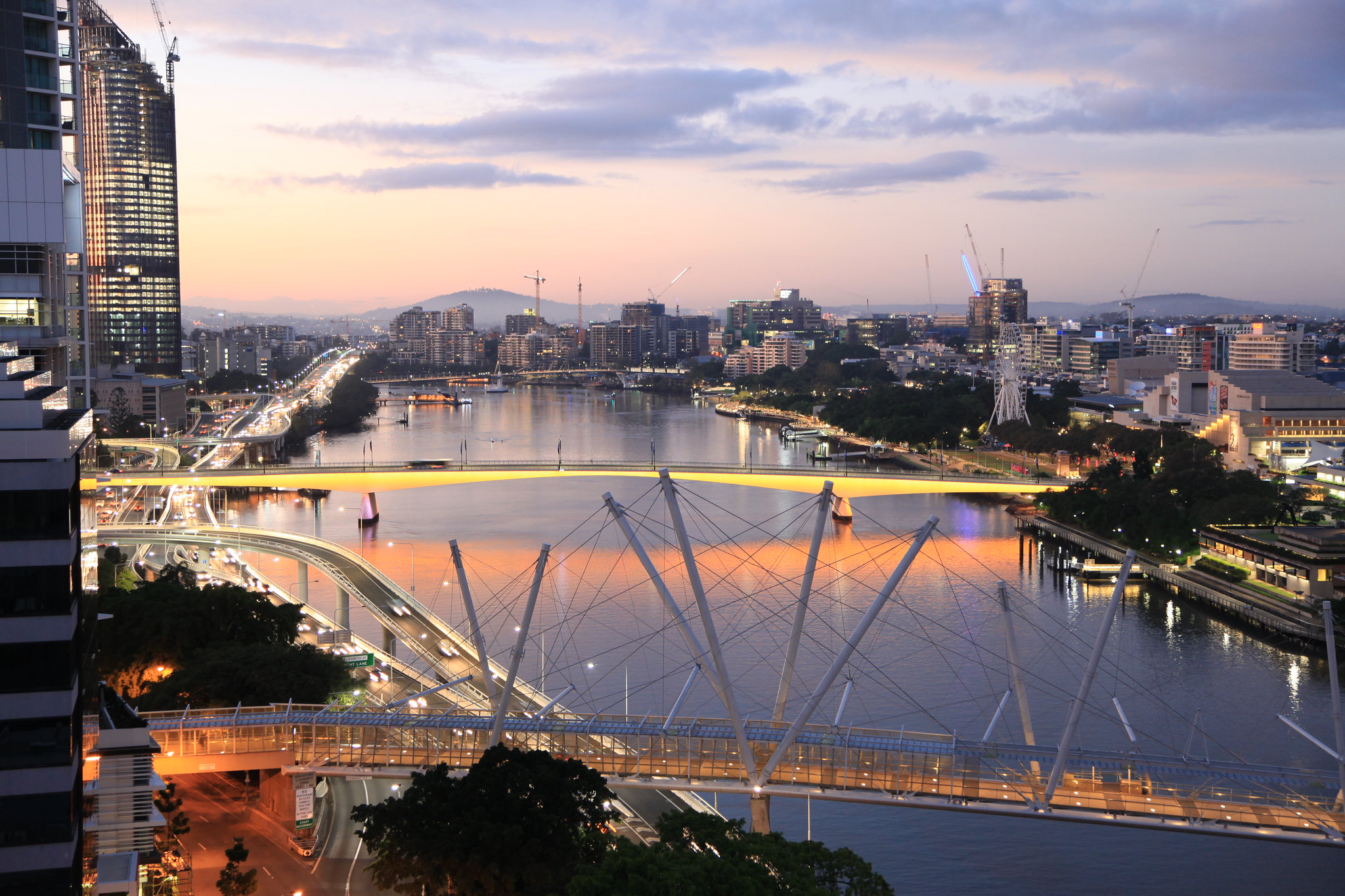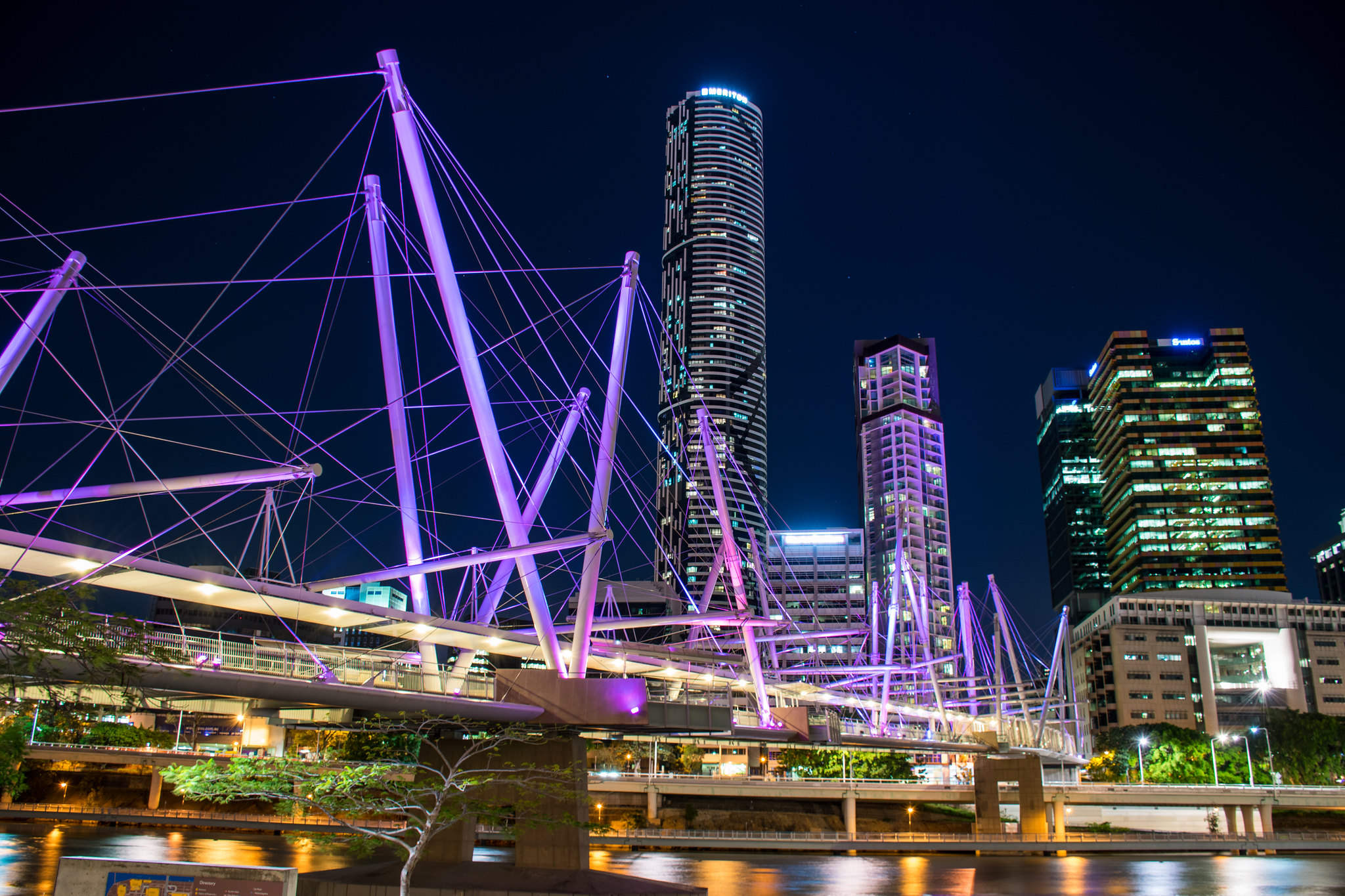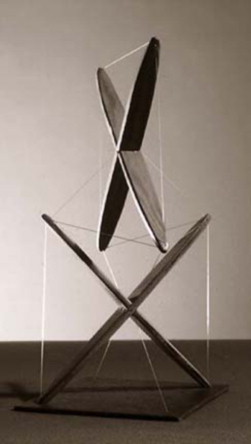
The X-Column
Tensegrity structures first appeared in art. Kenneth Snelson talks about the art of tensegrity as an artist. In 1948, X-column, the first reported tensegrity structure, was built by Kenneth Snelson while he was studying at the Black Mountain College in North Carolina. He succeeded in creating the object shown on the left. Snelson began to constract study models ın 1959. He tried to discover the ways of extending the conventional kite frame called the proto-tensegrity structure.
The roots of tensegrity structures were placed in the world of constructivist art. in 1920, a truly constructivist artist, Karl Ioganson, built the first sculpture that looks like a structure of tensegrity, a “prototensegrity,” which was exhibited in Moscow in 1921, under the title of “Study in Balance.” The sculpture of Ioganson does not meet one of the main demands of a tensegrity structure: to produce a stiff balance under no external force and moment and in tension with all of the cables. As can be seen, external force must be applied to the structure of Ioganson to maintain balance with all cables in tension: an external tensile force must be used to tighten and stiffen the structure. We are not sure whether Ioganson has ever overcome this problem and created a sculpture of tension.
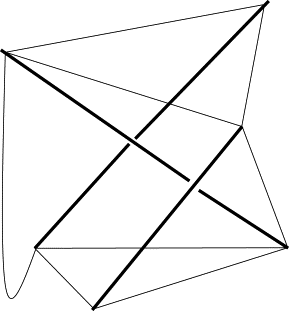
The Proto-tensegrity Structure by Ioganson in 1920
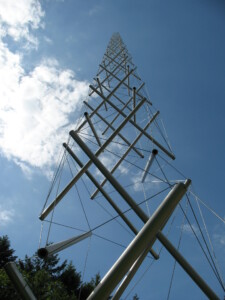
In architecture and civil engineering, tensegrity definition found applications including towers, wide dome constructions, stadium roofs, tents and temporarily structures. The best known tension structures are towers made of tensegrity modules. The Needle Tower and Needle Tower II are an example. The Needle Tower (1968) is a artwork made of aluminum and stainless steel by the artist Kenneth Snelson. The structure was created by stretching aluminum pipes with the help of stainless steel cables. Simply it was geometric and consist basic elements such as cables and bars. The sculpture seems to float above the ground. The artwork is placed in Hirshhorn Museum.
“All new approaches to art arise from technology and engineering and move towards organization and construction.” Rodchenko
Buckminster Fuller kept on looking for new designs, applications and methods of construction and created the Geodesic Tensegrity Dome. Some of designers and engineers inspired by the work of Fuller and began to explore any application to architecture and engineering.
In different civil engineering fields, applications of tensegrity systems are bridges, roof structures and smart structures. One of the most beneficial features of these structures is that they maintain their rigidity under correct operation without the need for external elements. Another important benefit is that Tensegrity structures are feasible due to known infinitesimal processes to regulate stiffness.
The stadium at La Plata (Argentina), based on a prizewinning design by architect Roberto Ferreira, is an important example of Tensegrity’s use in roof structures. They prefer a cable dome structure than a conventional structure. The construction of double grid structures has contributed to an emphasis on the use of Tensegrity for constructing bridges. The Kurilpa Bridge in Brisbane, Australia is the world’s biggest Tensegrity bridge. It was opened on 4 October 2009. The Tensegrity cable stay system provides synergy between balanced tension and compression components to create an amazingly solid light structure.
The 470 meter long bridge has a main length of 120 meters which contains two wide platforms of view and rest, two rest areas and a continuous wholesome canopy over the entire length of the bridge. A tensegrity system supports a canopy. The bridge is expected to include 550 tons of structural steel, including 6,8 kilometres.
Snelson performed initial studies for the design of Tensegrity grids, but their use was constrained. The development of Tensegrity grids and foldable Tensegrity structures was based on over the past few years. In the area of walls, towers and buildings, this sort of grid has the most feasible possibilities.

